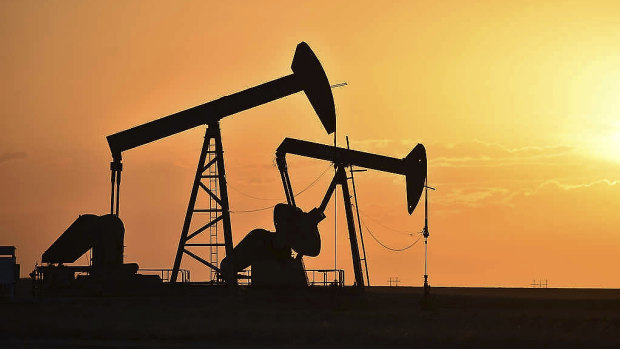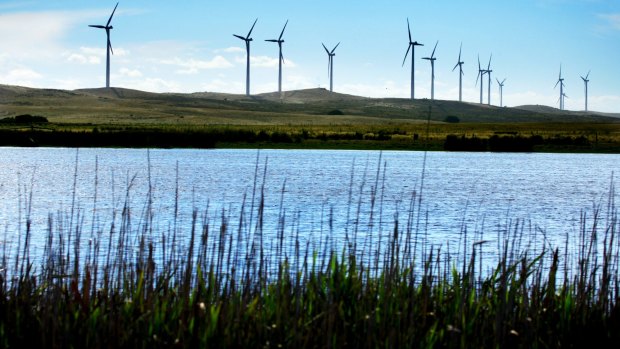This was published 3 years ago
Opinion
Prices and profits fly as miners enter a new ‘super cycle’
Stephen Bartholomeusz
Senior business columnistIn the midst of the BHP economic and commodities outlook published alongside its interim results this week was a thought-provoking reference to “fly-up” pricing.
While that reference was a specific comment on the environment for metallurgical coal, it could equally apply across a much broader suite of commodities and provide support for the emerging thesis that the resources sector is experiencing the start of another “super cycle”.

Global oil prices have pushed to seven-year highs with retail petrol prices across Australia at record levels.Credit: AP
“Fly-up” pricing occurs in environments where demand is increasing at a rate far greater than supply can keep up with it and the existing capacity of a sector is already so fully utilised that prices soar well beyond what normal supply-demand relationships would dictate.
Conventionally, commodity prices are set by the marginal producer – the producer who sits on the sector’s cost curve at the price that balances supply and demand.
In a fly-up pricing environment, cost curves are almost irrelevant because customers are prepared to pay almost whatever it takes to get their hands on commodities where the demand substantially exceeds supply.
Oil prices are nudging $US100 a barrel. Iron ore prices might have fallen back significantly from their recent highs but are still at historically high levels. Coal and gas prices have soared – at one point last year met coal prices hit a mind-boggling $US600 a tonne – while nickel and aluminium prices are also booming.
The Bloomberg Commodity Index has risen almost 50 per cent from its pre-pandemic levels and is up 86 per cent from its nadir when the threat of COVID-19 was first widely recognised in March 2020.
As BHP and Glencore’s results demonstrated this week – a near-record half-year for BHP and a record result for Glencore – much of the resources sector is booming amid acute shortages of supply.
It’s not just that the sector is having a very good pandemic but that a confluence of circumstances has driven prices to levels that, when combined with the cost and capital disciplines resource companies have embraced over the past decade, is swelling profit margins and profitability.
The out-workings of the pandemic have taken everyone by surprise.
The fiscal stimulus and flood of liquidity unleashed by governments and central banks in response to its emergence ignited a huge increase in consumer demand even as COVID-19 caused chaos within supply chains. And, with the supply of goods unable to keep up with that dramatic surge in demand, caused an outbreak of inflation at levels that, in the US, haven’t been seen for 40 years.
BHP talks about “good inflation” “bad inflation” and “greenflation.” The supply chain bottlenecks, costs and labour shortages related to COVID-19 produce bad inflation. Increased demand drives good inflation and decarbonisation green inflation.
The strength of the rebound in the global economy and the way that has fed into increases in demand – and input costs – are examples of good inflation.

Decarbonisation technologies – whether its wind, solar or the batteries required for electric vehicles - require steel, copper, nickel, lithium and other metals.Credit: Jessica Shapiro
Greenflation is only just underway as the world, including commodity producers, respond to climate change. Decarbonisation technologies – whether its wind, solar or the batteries required for electric vehicles - require steel, copper, nickel, lithium and other metals. It is a new, extra and structural source of demand.
The bad inflation might wash away. Late last year there were signs that the global supply chain blockages were starting to be resolved. The effects of the pandemic, even as it continues, are lessening.
The good inflation and greenflation are, however, being baked into industry cost curves and, for the resources sector, both lifting the curve and steepening it.
For the low-cost producers, and Australia’s big miners, particularly our iron ore and coal miners, tend to be both at the low end of the cost curves and at the top end of the quality curves, the lifting and steepening of the cost curve leverages their profitability.
The underlying supply-demand imbalances that are driving commodity prices are structural. When the last commodity super-cycle ended a decade ago it imposed intense pressure on resource companies’ profitability and even viability.
The response of the big end of the sector was to carve into their cost bases and conserve capital. Those responses have been engrained, even as their profitability has been restored.
There have been few new developments of big mines started in the past decade – those that have been developed have tended to provide replacement volumes to offset the depletion of existing resources – and so few meaningful net additions to supply.
Industry investment has been disciplined and the lessons of the end of the last cycle have been embedded in board and management psyches.
In mining there is no ability to turn on a tap and increase supply. Lead times can be measured in decades. New large high-quality resources are in any case scarce and, to the extent there might be new developments, they would enter today’s markets well above the low end of the cost curves.
In the oil and coal sectors, decarbonisation deters new investment. Big Oil and Glencore – the world’s biggest coal miner – are broadly pursuing depletion strategies, maximising returns from their existing resources and minimising new investments.
The outlook is particularly bullish for the producers. Inventories of every commodity are low and demand is outstripping supply for most resource and agricultural commodities.
That relative dearth of new investment in the resources sector is one of the key arguments for why we could be seeing another super cycle developing.
The last cycle was driven by China’s industrialisation and turbocharged by its response to the 2008 financial crisis. This one could be the result of a sustained increase in consumer demand and inflation colliding with the industry’s inability or unwillingness to respond quickly.
In the immediate future the outlook is particularly bullish for the producers. Inventories of every commodity are low and demand is outstripping supply for most resource and agricultural commodities.
In the metals sector the premiums customers and traders are paying to secure supply has produced “backwardation” in futures markets, with spot prices higher than the prices in contracts for later delivery. That reflects the shortfalls in supply and the lack of stockpiled inventory.
Goldman Sachs, and others, regard the current state of commodity markets as unprecedented and believe the investment needed for a supply-side response to the demand will underwrite a stronger-for-longer cycle that could last a decade or more, particularly as the greening of economies develops momentum.
Whether that might constitute a super cycle, with greenflation playing the role that China did in the last resources boom, is an open question that will only be answered with hindsight.
If the big miners maintain their cost and capital disciplines, however, it could be a super-profitable cycle regardless of how that question is answered.
The Business Briefing newsletter delivers major stories, exclusive coverage and expert opinion. Sign up to get it every weekday morning.